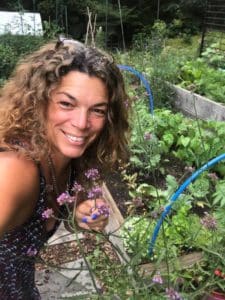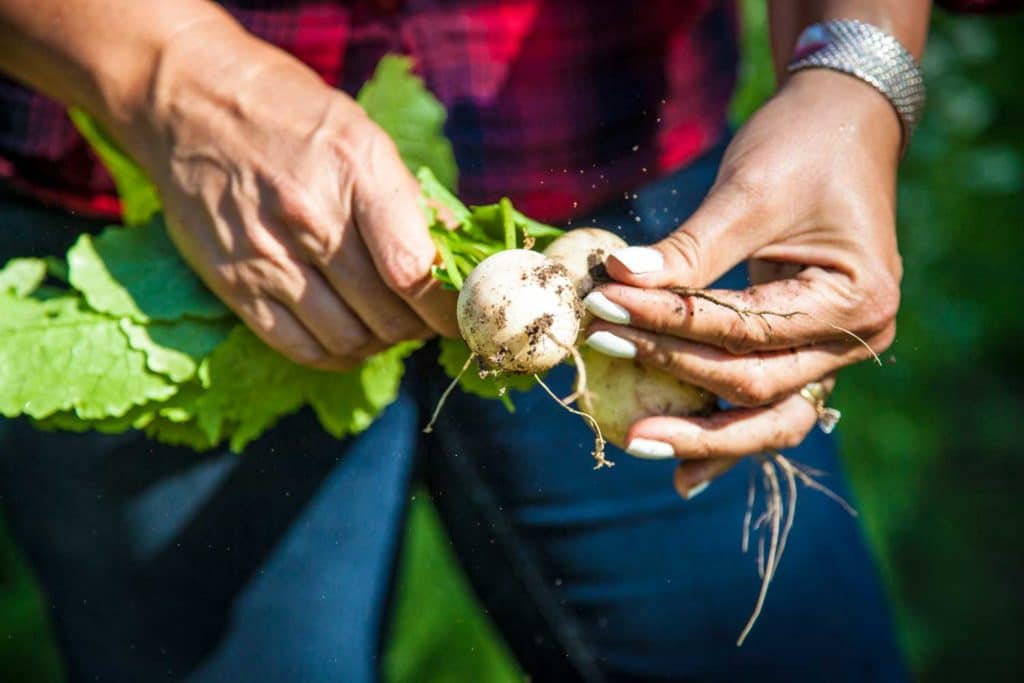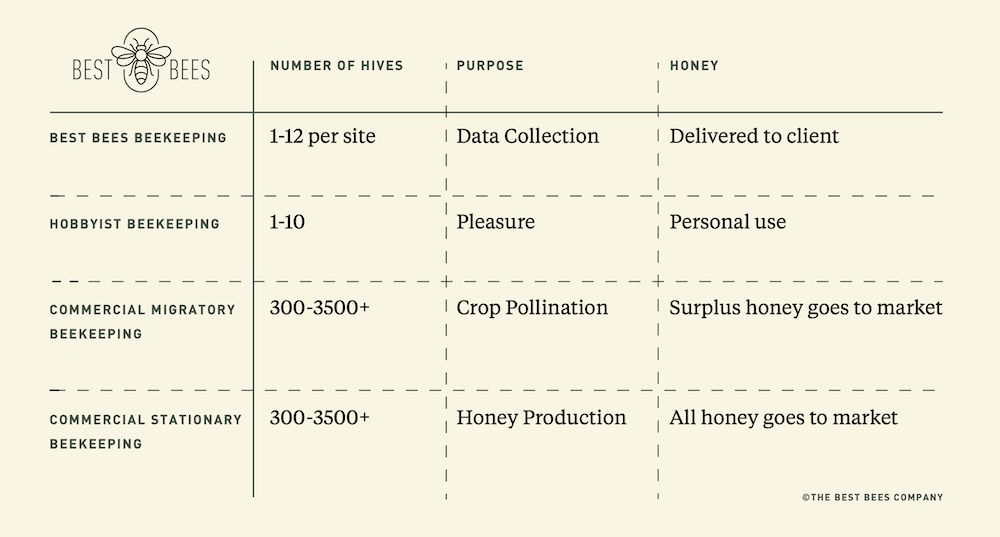Guest Blog Post by Renee Bolivar
I am not one to rush the seasons. I’m one of those, wish summer would never end, kind of gals. Thing is when it comes to gardening and all things green and growing, we need always be one step ahead. So, although it’s only August and here in the Boston area (Zone 6) we’ve been in a heat wave, it is time to start thinking, dreaming and planning for what comes next.
While we are all enjoying our summer gardens in full bloom, now is the perfect time to start planning for Fall. With a few goals, you can make the most of your Fall and reap the rewards after the spring thaw. Fall is a busy time in our organic gardens. It’s the perfect time to plant a Pollinator Habitat, plant garlic, start a compost pile, and get our gardens ready for some much needed winter rest. Let’s dive deeper into each of these exciting growing projects.
What do you see? I see a Pollinator Garden filled with Coneflowers, Daisy, Black-eyed Susans, and the start of a good compost pile.
1. Plant A Pollinator Habitat
Pollinator habitat or what I like to call, a bee buffet, is created by adding perennials, bulbs, herbs and shrubs to our gardens and landscapes. Our bees, butterflies, birds and bats need and appreciate a diverse diet filled with nectar, pollen and insects.They are desperate for food after the long winter in early spring. Diversity is the key to a good pollinator garden. I always say, if you want to help #savethebees, you need to #feedthebees.
Many of the gardens I work and grow in have beehives. Our clients offer their lush gardens as beautiful and sustaining spaces where bees can thrive.
For those DIY’ers out there, here are some tips for planting a fabulous pollinator garden that will bloom from spring through fall next year.
- Choose a variety of plants that bloom at different times throughout our growing season.
- If space allows, plant in groupings of 4-6. Planting an abundance of flowers in one location helps pollinators forage more quickly and efficiently from flower to flower and allows them to collect a full load of pollen and nectar in one swoop. Efficiency!
- Prep your planting area by adding quality compost to the soil.
- Plant Natives! You can find more information including a National Native Plant Finder on my recent blog post, Sustainable Landscapes For Life.
Learn more about Pollinator Habitat from our friends at the Xerces Society. Like the Best Bees Company, the Xerces Society is a science-based organization focusing on pollinator conservation.
2. Plant Garlic
This sultry plant, (yes, garlic) has attractive qualities that entice us throughout its growing season, which begins in late fall (October-ish) and lasts through midsummer. That is, if you can hold out.
Garlic adds to any edible landscape and is a staple in most kitchens. Homegrown garlic has a distinctive flavor; once you’ve grown and tasted your own fresh garlic, you’ll never go back to commercially grown and shipped from China again. You won’t have to either. Garlic is one of those crops that keeps on giving.
FYI Garlic is divided into two types, hardback and soft neck. Hardneck types develop an edible stalk called a scape. Scapes have become quite the delicacy and give those of us who just can’t wait a little tease of good things to come. Softneck types have a more subtle flavor than hardback and keep longer, if stored properly.
Fall is the perfect time to plant this easy-to-grow crop. Here’s how it’s done.
All you have to do is purchase some quality organic garlic heads from a local farm or farmers market. Store bought garlic is usually treated with a chemical that keeps it from sprouting. You’ll get scapes in June and a full garlic harvest around mid-July. If you remember to store a few of the larger heads, you can start the cycle all over again.
It’s time to plant the garlic!
3. Composting
Fall is the perfect time to start a Compost pile/heap. Composting is fun and easy and gives back to the soil and earth. It’s also a great way to ensure your gardens have the nutrients they need from season to season. I recommend adding compost every time you plant. If you like a more hands-off approach, Bootstrap Compost does food scrap pickup and soil amendment delivery services in the Greater Boston area.
Check out this video on how-to start a compost pile with Gardens By Renee.
4. Putting Our Gardens ‘To Bed” For the Winter
- Harvest everything above ground in our veggie gardens. Don’t leave fruits on the ground. They’ll only rot and attract animals and pests.
- Add compost
- Pull all weeds
- Plant flowering bulbs, garlic and Rhubarb before the ground freezes.
- Send off a soil sample for testing to your local extension school. For those of you in Massachusetts more info can be found here. More is never a good thing in the garden, especially when it comes to fertilizers that just run-off and or end up in our ground water.
- Collect leaves for mulching perennial beds and for the compost pile.
- Clean and store garden tools
- Shut water valves and irrigation off
Don’t be a neat freak! Save perennial garden cleanup for spring. Winter habitat is critical for our pollinators and beneficial insects that overwinter in different life stages: eggs, larvae, pupae, and adults. Some overwinter in hollow stems, while others attach to plants or overwinter in the leaf litter. To protect overwintering pollinators, don’t cut down your perennial gardens until spring (early April), and keep beds of leaves intact through the winter.
“In a way Winter is the real Spring – the time when the inner things happen, the resurgence of nature.” – Edna O’Brien
Keep Growing!
Renee








